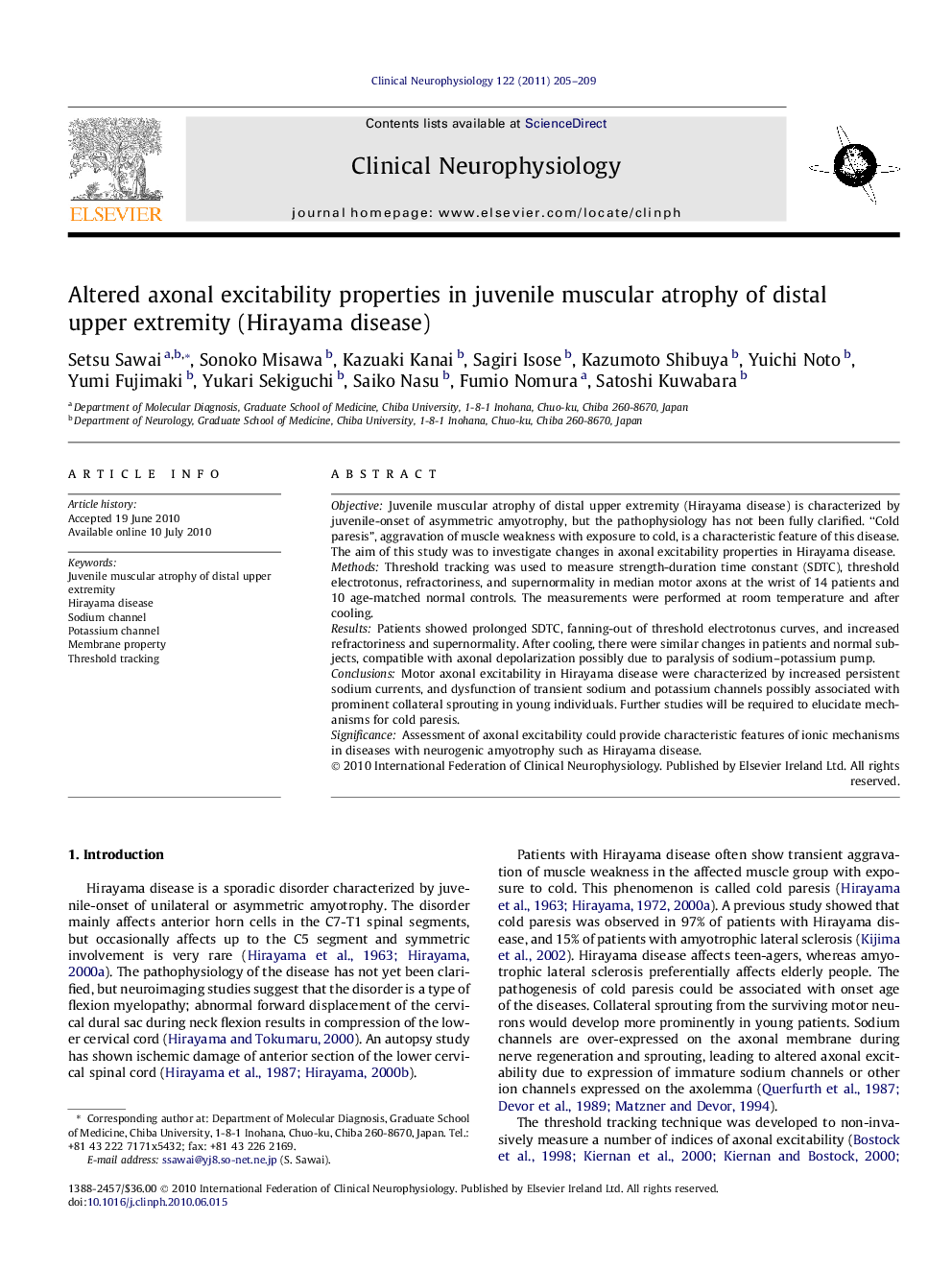| Article ID | Journal | Published Year | Pages | File Type |
|---|---|---|---|---|
| 3044264 | Clinical Neurophysiology | 2011 | 5 Pages |
ObjectiveJuvenile muscular atrophy of distal upper extremity (Hirayama disease) is characterized by juvenile-onset of asymmetric amyotrophy, but the pathophysiology has not been fully clarified. “Cold paresis”, aggravation of muscle weakness with exposure to cold, is a characteristic feature of this disease. The aim of this study was to investigate changes in axonal excitability properties in Hirayama disease.MethodsThreshold tracking was used to measure strength-duration time constant (SDTC), threshold electrotonus, refractoriness, and supernormality in median motor axons at the wrist of 14 patients and 10 age-matched normal controls. The measurements were performed at room temperature and after cooling.ResultsPatients showed prolonged SDTC, fanning-out of threshold electrotonus curves, and increased refractoriness and supernormality. After cooling, there were similar changes in patients and normal subjects, compatible with axonal depolarization possibly due to paralysis of sodium–potassium pump.ConclusionsMotor axonal excitability in Hirayama disease were characterized by increased persistent sodium currents, and dysfunction of transient sodium and potassium channels possibly associated with prominent collateral sprouting in young individuals. Further studies will be required to elucidate mechanisms for cold paresis.SignificanceAssessment of axonal excitability could provide characteristic features of ionic mechanisms in diseases with neurogenic amyotrophy such as Hirayama disease.
